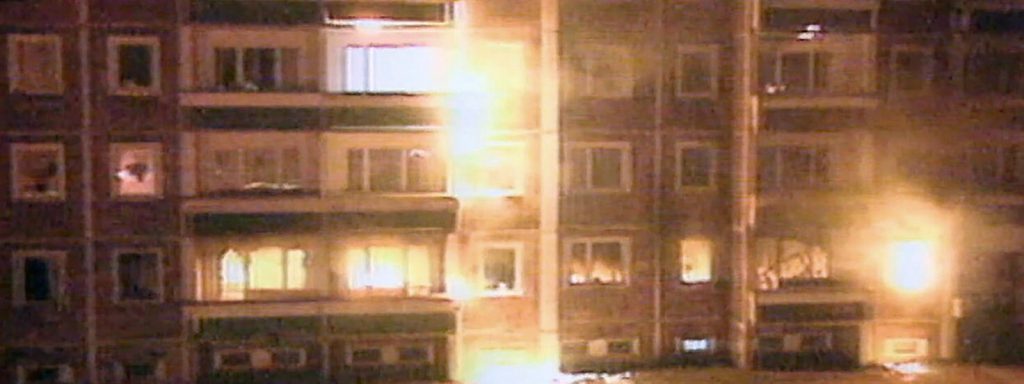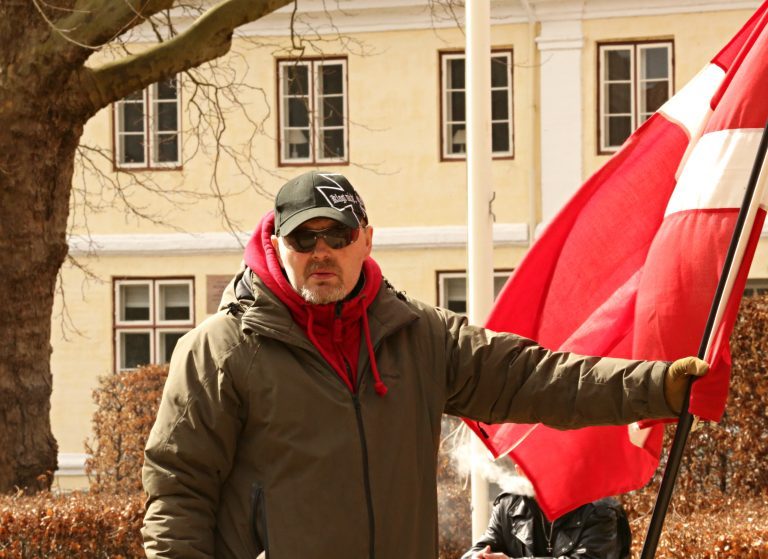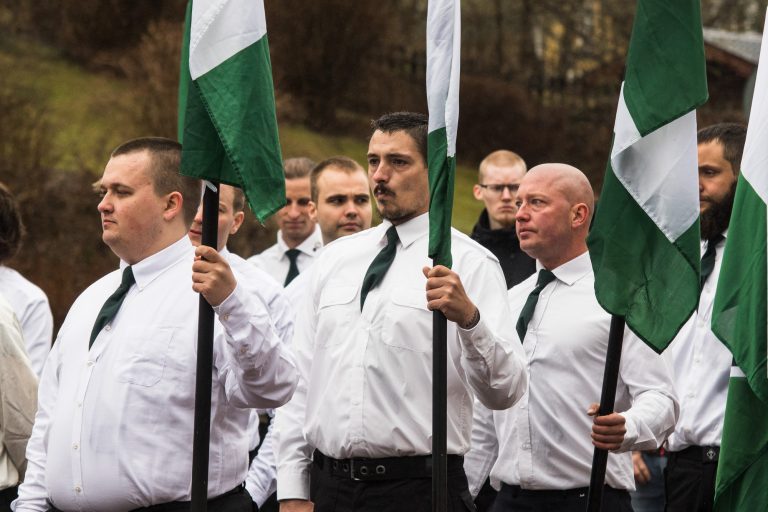
Interview: “The Baseball Bat Years Shaped German Antifascism”
Racist pogroms are not only a phenomenon from the 1930s. The violent racist riots in the UK this summer has highlighted a phenomenon which in particular German antifascists have had troubling experiences with. Redox has spoken with one of the German antifascists who experienced it.
Publiceret den 18. september 2024
The summer of 2024 will be remembered for the brutal racist riots that have rampaged a number of cities across the UK. Riots that you can learn more about in Redox’s podcast Under the Microscope.
However, mob justice, racist riots, or outright pogroms are unfortunately not a new phenomena. In Germany, the early 1990s saw a series of very violent racist riots, often initiated by organized neo-Nazis. The violence was so extensive that the period became known as the Baseballschlägerjahre, or in English the Baseball Bat Years.
The antiracist organization, Amadeu Antonio Stiftung, estimated in 2021 that at a minimum of 219 people have lost their lives as direct victims of racist violence since the reunification of Germany in 1990. On that background, Redox has interviewed Tobias Alm, who has been active in the German anti fascist movement since the 1990s. Today, Tobias Alm is based in Copenhagen.
What was the background for the so-called Baseball Bat Years?
“Since World War II, there has been violence from the German far right regularly. But in the 1990s, it peaked with a terrible intensity. Many were injured or even killed. There are many reasons for this, but there is no doubt that the reunification of East and West Germany is a key turning point. The reunification resulted in a nationalist wave of German pride and a new sense of greatness,” Alm says and continues:
“At the same time, politicians in Germany, as also seen in several surrounding countries, widely began to blame immigrants for the country’s problems. Violence especially escalated in the old East Germany. An important explanation is that many East Germans had high hopes that the reunification would and could improve their quality of life, only to shortly after realize that the promises of new prosperity from West German politicians would not materialize. Many East Germans ended up in unemployment and despair. Refugees and, among others, Vietnamese workers, who came to the country during the East German era, were turned into scapegoats for the frustration.”
Why did things go so wrong?
“There are two aspects of the 1990s, that we have to look at. One is that racist street violence happened very often and it was brutal. It could affect anyone who did not fit into the far-right’s racist worldview. The result was terrible injuries and deaths. Another aspect is that neo-Nazis and their followers began throwing Molotov cocktails into asylum centers and other buildings where they knew people with migration backgrounds lived. This meant that people who stayed indoors because of safety concerns could not even be safe in their own homes,” Tobias Alm explains Redox.
He adds:
“However the violence did not stop with the many street attacks and arson attacks. Countless attempts were made by neo-Nazis to directly attack asylum centers. In quite many cases, the neo-Nazis actually received support from the local population. Fueled by an astonishing inactivity from the police, many places quickly saw a lynch mentality develop.”
One of the first incidents was on September 17 1991, in the East German city of Hoyerswerda, which is not far from the borders with Poland and the Czech Republic. Here, organized neo-Nazis and local residents came together in front of a building housing workers from Vietnam and Mozambique. They attacked it with stone-throwing, and after one day, the police surrendered and escorted the workers out of town, while there were absolutely no consequences for the perpetrators. Instead, the alliance between outside neo-Nazis and local residents continued the attacks. Now the target became a building housing asylum seekers. Around 1500 people surrounded the building and threw stones and Molotov cocktails. After two days of riots and unrest, the police escorted the asylum seekers out of the city. The neo-Nazis and the local population celebrated and declared that Hoyerswerda was the first “foreigners free city” in Germany.
“This pattern was repeated many times in the following years. These were truly pogrom-like situations. Everytime the pattern seemed to be that the neo-Nazis and their followers gathered in front of asylum centers, and slowly the local population joined in. The police typically did not have enough officers on the ground and did not intervene at all or did not make much of an effort,” Alm explains Redox.
Redox has compiled a list of examples of the attacks:
- September 17, 1991, Hoyerswerda
The Hoyerswerda riots lasted several days, with neo-Nazis and locals attacking refugees and guest workers. This marked the beginning of a wave of racist violence in Germany. No one was killed in the attack, but many people were injured, and the attacked individuals ended up being evacuated. - September 19, 1991, Saarlouis
An arson attack on an asylum center in Saarlouis killed one person and injured two others. The person killed was Samuel Yeboah, who was a refugee from Ghana. - October 3, 1991, Hünxe
Two girls, at the age of 6 and 8, were seriously injured when a group of neo-Nazis attacked an asylum center with Molotov cocktails. - October 4, 1991, Zwickau
Around 100 neo-Nazis attacked an asylum center and set it on fire. Seven people were seriously injured. - November 3, 1991, Greifswald
Approximately 200 football hooligans, mainly coming from the club BFC Dynamo, attacked an asylum center and its residents. 35 people were injured in the attack. - January 31, 1992, Lampertheim
A Sri Lankan family of three was killed in an arson attack on their own home. - March 14, 1992, Saal
40 far-right extremists attacked an asylum center and killed the asylum seeker Dragomir Christinel. - May 28, 1992, Mannheim
An entire week of siege of an asylum center. 400 locals and neo-Nazis repeatedly attacked the building. The police were present but did not prevent or stop the attacks. - August 22-24, 1992, Rostock-Lichtenhagen
One of the most notorious neo-Nazi attacks in Germany. Several hundred far-right extremists, with the support of local residents, attacked an asylum center and set the building on fire. This resulted in extensive material damage on the building, but by some kind of miracle there were no fatalities. - September 6-13, 1992, Quedlinburg
In a series of violent incidents neo-Nazis attacked refugees and foreigners in Quedlinburg. - November 23, 1992, Mölln
Three people were killed and nine others were seriously injured, when two houses inhabited by Turkish families were set on fire by neo-Nazis. - May 29, 1993, Solingen
Five people were killed in an arson attack on a house inhabited by a Turkish family. - January 18, 1996, Lübeck
Ten people were killed, when an asylum center was set on fire in Lübeck. This attack was one of the deadliest of its kind and brought increased attention to the massive problems with far-right violence in Germany.
What did the antifascist movement do?
“Primarily, it was the antifascist scene that stood up against the violence in The Baseball Bat Years. Daily life was marked by constant alertness, and it was not uncommon to respond to emergencies at asylum centers or street attacks. Many activists spent their nights during this period in asylum centers, in nearby youth houses or squatted buildings, when rumors circulated that neo-Nazis were planning attacks. This also led to the expansion of networks and mutual assistance across geographical areas. Most often, there was no help from the local population. Unfortunately, many antifascist activists found themselves in very violent situations where they typically were outnumbered, and the police either did not show up or willingly turned a blind eye to the violence. When the violent pogrom took place in Rostock-Lichtenhagen in 1992, the police never showed up in sufficient numbers. It wasn’t until 300 antifascists arrived that the neo-Nazis fled the scene. However, this meant that the police, who had done nothing against the neo-Nazis, now arrested the antifascists. When the police removed the antifascists, the pogrom continued. This was a tough period, where many were physically injured and also suffered psychological trauma,” Alm explains.
How was the violence stopped?
“Towards the turn of the millennium, the attacks began to wear off. The violence did not disappear, but the severe pogroms at asylum centers stopped. This was partly because the more established left wing and the political center became more involved after having neglected the problem in the 1990s. Resistance became more concrete, forcing both politicians and authorities to do something. This led to the police and intelligence services beginning to focus more and more on the far right. This was a contributing factor to the neo-Nazis changing their strategy, largely moving away from violent pogroms in favour of attempting to organise large demonstrations and concerts,” says Tobias Alm.
He notes to Redox that this period of time now, thirty years later, still holds huge significance for the antifascist movement in Germany today.
“It was the first pogroms since World War II, and many in the antifascist scene blame themselves for not being able to stop the violence effectively. The active antifascists were very much alone during those tough years. Luckily, this has changed today. Antifascism today is much better rooted in the population, and support for blockades of neo-Nazi marches is much greater too. Additionally, the research and mapping of the neo-Nazi scene is much better today, meaning that it is much easier to stay ahead of the problems.”
Du kan støtte vores fortsatte arbejde med at afdække den yderste højrefløj ved at give en donation på Mobilepay: 80905 eller ved at blive støttemedlem.


